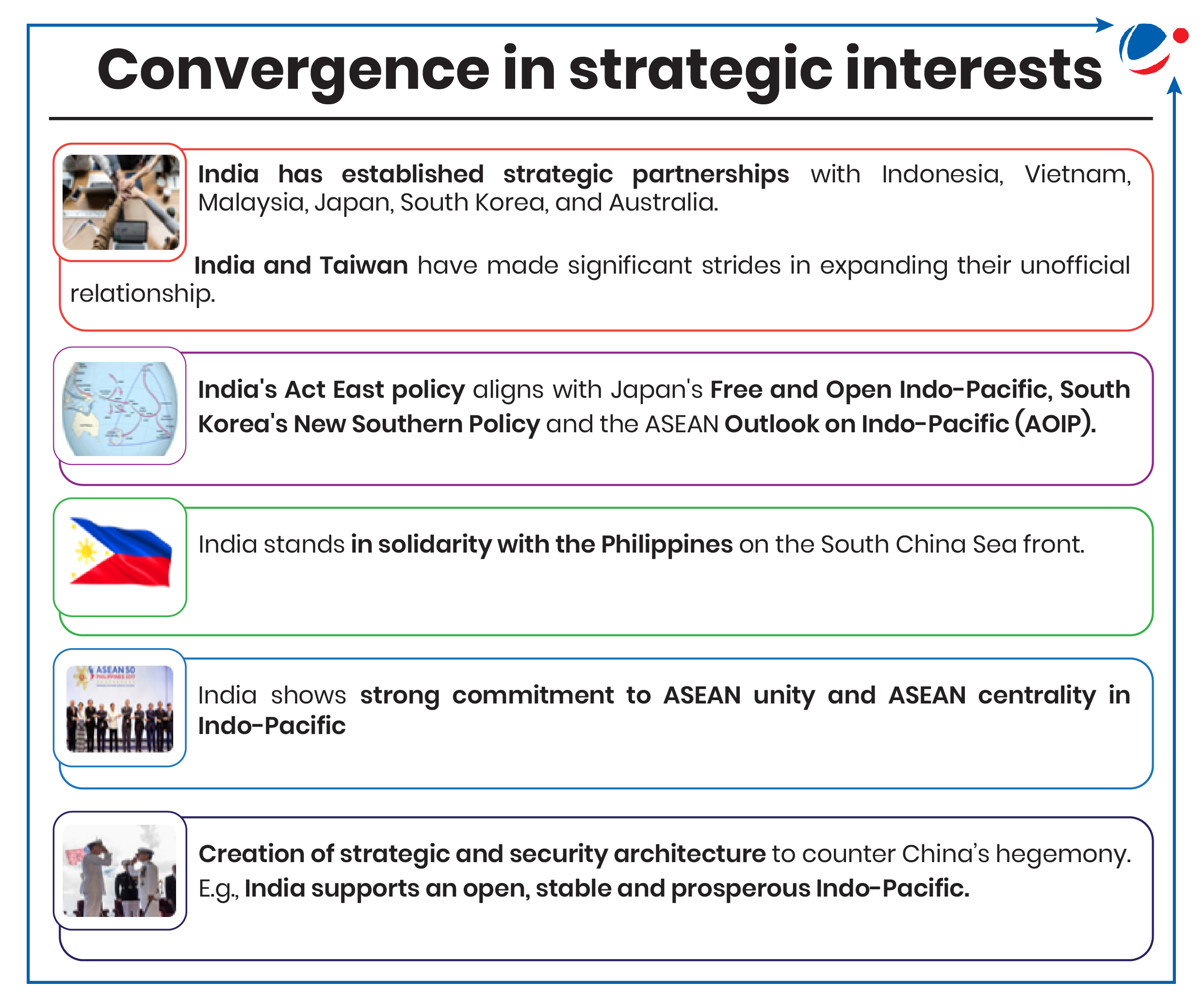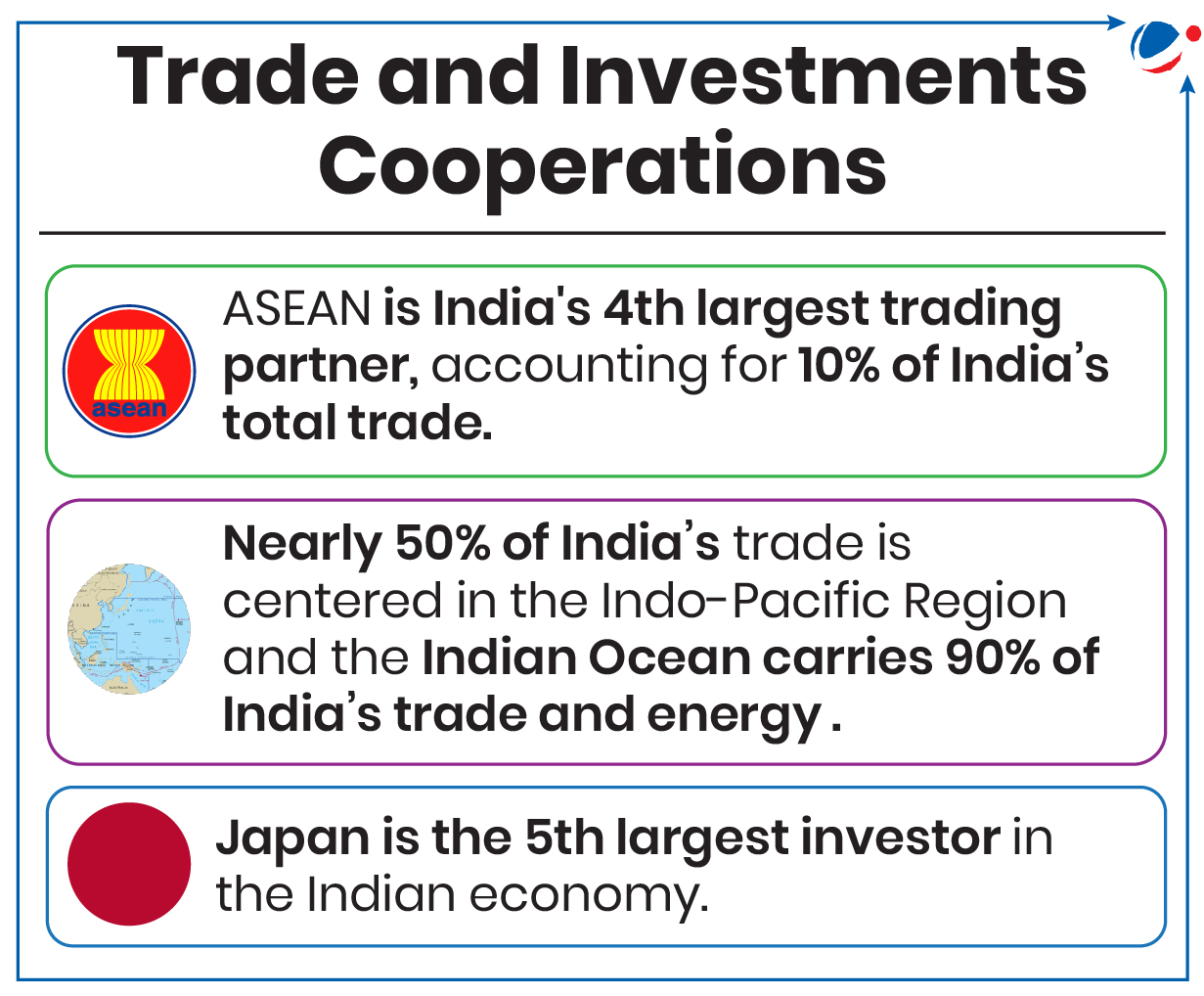Why in the News?
Experts have pointed out that the recent Indian PM's visit to Singapore is about giving a fresh impetus to India's engagement with South East Asia and more broadly the vast Pacific region.
More on the News
- The visit is of particular significance as 2024 marks a decade of India's Act East Policy which was announced by Prime Minister at the 9th East Asia Summit in 2014.
India and East Asia: From Look East to Act East Policy
|
Act East policy (AEP) in Action

- Expansion of AEP from East Asia to the Indo-Pacific: Look East Policy solely focused on ASEAN; AEP expanded strategic scope, emphasizing on Indo-Pacific region with ASEAN as core in extended neighbourhood.
- E.g., The Indo-Pacific Oceans Initiative launched in 2019.
- Strengthening of Multilateral and Regional engagement: India continues to forge closer partnership with ASEAN, BIMSTEC, Asia Cooperation Dialogue (ACD), Indian Ocean Rim Association (IORA), etc. E.g., Recent adoption of BIMSTEC Charter.
- Growing institutional collaboration: With the United States (US) and its allies – Japan, Australia, and South Korea. E.g. India had joined US-led the Indo Pacific Economic Framework for Prosperity (IPEF), Supply Chain Resilience Initiative (SCRI), etc.
- Japan has provided loans for connectivity projects in Northeast India.
- India's proactive role in defence diplomacy and exports:
- In 2022, Philippines became BrahMos' first export destination of shore-based anti-ship missiles from India.
- India-Vietnam military logistics pact: Respective militaries to access each other's bases and enhance the scale and scope of joint production respectively.
- Energised Connectivity Programmes: Kaladan Multi-Modal Transit Transport Project connecting India's Mizoram state with Myanmar's Sittwe Port, India-Myanmar-Thailand Trilateral Highway, Mekong-India Economic Corridor.
- India's active Socio-cultural and developmental outreach: Evidenced by increasing people-to-people ties (2 million diaspora strength) and significant state visits like Prime Minister's visit to Brunei and Singapore.
- Developmental outreach towards Pacific Island countries: Establishment of Forum for India-Pacific Islands Cooperation (FIPIC) and India's Vaccine Maitri initiative, which provided vaccines to Papua New Guinea.
Key Challenges to Act East Asia Policy

- Delay in Infrastructure Development: Kaladan Multi-modal Project's delay have caused its budget to balloon six times to Rs 3,200 crore, from Rs 536 crore in 2008.
- Political turmoil and civil unrest in Bangladesh: Uncertainties over the future of India-Bangladesh connectivity projects under the new political situation.
- Influx of refugees into India's northeast: Led to destabilizing the borders and causing ethnic conflict in bordering states. E.g., Manipur unrest.
- China's expanding footprint in the Indian Ocean region: This could impact India's access to strategic maritime trade routes through the Mongla Port in Bangladesh.
- Competing with China: China's significant economic and political influence in East Asia can make it challenging for India to gain traction. E.g., In 2023, the trade between China and ASEAN reached USD 911.7 billion.
- Expanding India's trade deficit with ASEAN: From US$ 7.5 billion annually when the agreement was enacted in 2011 to approximately US$ 44 billion in 2023.
Way Forward
- Trade: Re-negotiation of ASEAN Trade in Goods Agreement (ATIGA) at the earliest and address the issue of widening India's trade deficit with ASEAN.
- Infrastructure: Enhanced connectivity through completion of pending infrastructural projects
- Security cooperation: Enhance maritime security cooperation in the Indian Ocean and South China Sea
- Cultural diplomacy: Leverage shared cultural heritage, especially with Buddhist-majority countries.
- Multilateral engagement: Strengthen ties with other regional powers like Japan, Australia and Taiwan.







